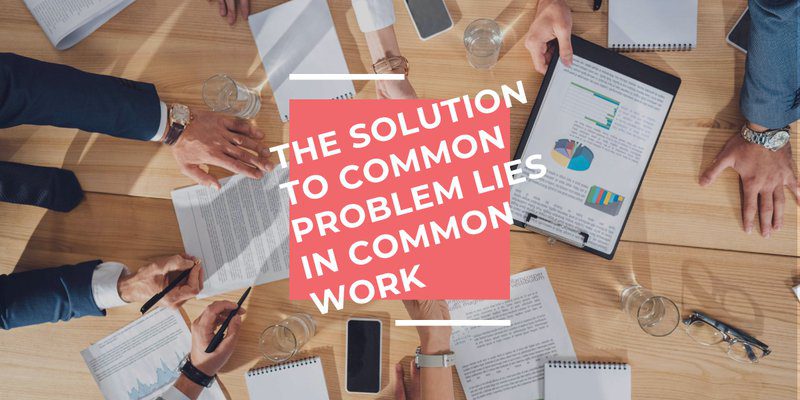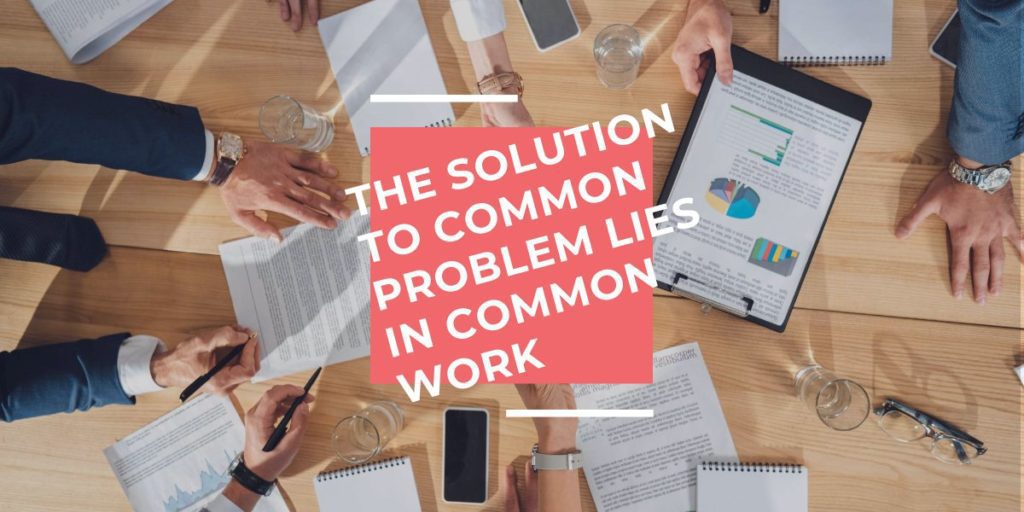
How To Choose An Effective Project Management Tool?
What is an effective project management tool? Do you ever have such questions?
Congratulations!
You're one step closer to the productivity level most people are just dreaming about.
If you don't, no worries. We'll cover all the things necessary to get you going.
Why do we need effective project management in the first place?
Why Are An Effective Project Management Tools Important?
The simple answer to the question is because we now live in a more complex world.
Every single activity, be it personal or business-related, needs to be considered as a project.
Our lives will be doomed if we can not manage all of these projects!
If you need more convincing to try a project planning tool, an estimated 77% of high-performing teams use project management software. On top of that, there are statistics to support the importance of an effective project management tool.
Projects can take months or even years to complete. Complex projects may take a long time, meaning there’s no time to waste!
If you want to make sure everything goes smoothly from beginning to end, then you should use a project management tool.
You don't know where your team members are at any given moment. This leads to wasted time trying to find them. Using a project management tool will ensure transparency throughout the entire process with the entire team.
Understand Your Workflow
Choosing the perfect project management tool isn't easy. There are hundreds out there, each claiming to be better than the next. It takes research, testing, and trial and error before finding one that works for you.
Before you even begin looking into project management tools, understand how your workflow currently operates. What does your current process look like? How often do you collaborate between different departments? Clear project workflows can help much in delivering complete projects.
There's even a separation in the industry between the tool for project management itself and for process management. By mapping out your workflow as detail as possible, there will be no need to acquire many tools that will most probably be costly.
So, what is project management?
Project management is the planning, organizing and managing the effort to accomplish a successful project. A project is a one-time activity that produces a specific output and or outcome. For example, a building or a major new computer system.
But, please remember that a project, as it's defined as a one-time activity, can include simple activities that you may manage in a simple to-do list.
In other words, project management can be as simple as one-man show or a project team that consists of project managers who manage many project timelines.
Here's how Denis Sasal explains project management in a short video:
What to look for in the most effective project management tool?
Apart from traditional tools like Microsoft Project and other desktop tools, there are many tools available that can even be used without the need to install anything on our computer.
These SAAS (Software As A Service) applications range from simple to-do list tools to get things done to kanban or collaboration-based applications like Trello, Basecamp, and Asana.
Here are 10 things to look for when it comes to choosing the most effective online project management tool.
The following list is also to answer this question: what are the key features of project management tool?
1. Gamification
Why is gamification so important?
Since we're kids, we love to create and play games. The main reason for having and playing games is to have fun and get motivated by whatever we're doing.
Gamification is the process of creating ordinary activity into something fun and rewarding.
Here's how John Sanei explains gamification of everything:
Find the gamification aspect of the tool or software that provides the ability to motivate and rewarding team members in completing each of their assigned tasks.
This gamification thing is indeed important when you see the necessity to get everyone on the project accountable and even reward the super performers.
2. User Stories
Putting people first is the key component of product development using agile or scrum methodology. The most utilized framework is used by many projects nowadays.
Geared toward continuous improvement, the agile methodology can greatly increase your project's prospects for success.
And here's what we can learn about Scrum in under 5 minutes:
User stories put actual end-users at the center of the conversation.
Stories use non-technical language to provide context for the development team and their efforts. After reading User-Stories, the team knows why they are building what they’re building and what value it creates.
User stories play the role of a prerequisite to task development. Each task is created to match the requirements set in the User-Stories.
Typically, use stories use a format like this:
As a [persona] I want to [do something/get something] so then I can [get something/accomplish something]
User-Stories is helping much in managing resource allocation and ensuring project deliverables according to the project goals.
3. Sprint
Sprint is the heart of Scrum. You need to look for a project management tool that has the feature to set sprint so that certain goals can be achieved while the whole objective can still be maintained. Each Sprint may be considered a part of a project with no more than a one-month horizon.
Sprints contain and consist of the Sprint Planning, Daily Scrums, the development work, the Sprint Review, and the Sprint Retrospective.
4. MoSCoW and effective project management
The MoSCoW method is a prioritization technique used in management, business analysis, project management, and software development to reach a common understanding with stakeholders on the importance they place on the delivery of each requirement; it is also known as MoSCoW prioritization or MoSCoW analysis.
Prioritization can be applied to requirements, tasks, products, use cases, user stories, acceptance criteria, and tests. MoSCoW is a technique for helping to understand priorities. The letters stand for:
- Must-Have
- Should Have
- Could Have
- Won’t Have this time
With this defined prioritization, you always know which activities should come first and which ones may come second, third, or even be ignored until time tells otherwise. This create effective project management.
5. Flexible Workflow
Your project management tool or software should allow you to create workflows as long or as short as you want. The typical workflow is to have TODO – DOING – DONE.
There is no prescribed workflow to follow. Like when you create lists on your Trello's board, you can create a workflow that can be viewed as a kanban board.
Flexible workflow is also vital to establishing effective project management.
6. Time Tracking
Sometimes, when you are doing your project, the payment is based on how long the project is completed. Find a project management tool or software that allows you to track time consumed down to the level of sub-tasks you are working on.
When you can keep a check over the time spent and comment on each task of your project, you can manage your projects better. Time tracking is also important to keep projects on time.
7. Task Effort
For task efforts, look for the use of the Fibonacci sequence as standard weight.
Traditional software teams give estimates in a time format: days, weeks, months. Many agile teams, however, have transitioned to story points. Story points rate the relative effort of work in a Fibonacci-like format: 0, 0.5, 1, 2, 3, 5, 8, 13, 20, 40, 100.
Here are the reasons:
Do we need to follow this approach for each of our projects?
The answer is “no”.
We do not need to use the Fibonacci sequence approach as it will be a little confusing if we're not working on any software development project.
We can set task efforts as simple as super easy, easy, a bit difficult, difficult, and super difficult. An individual task, a project task that may not be related to others, can even be simpler.
8. Unlimited Storage
Project management, be it big or small, needs some files to be stored and exchanged. Look for a project management tool or software that generously gives unlimited storage! If it doesn't, find out if it is integrated with external storage like Google Drive or Dropbox.
9. Team Performance
There are metrics to know immediately if you are on track and make adjustments on the fly. An effective team can help an organization achieve incredible results.
It will be a plus point if your software allows you to track team performance and progress through provided scrum metrics such as work in progress, defect detected, charts, and others.
10. Collaboration
The last thing out of the 10 most important ones is collaboration. It should be as simple as possible.
You should be able to share board planning with anyone, anywhere. Generate a public link and share. Centralized communication may be good to bridge effective communication between team members. Be it an in-house team or a remote team.
Even client communication should be easily permitted within the project dashboard.
It is no surprise, then, when some people call project management tools collaboration tools.
Now, after studying all those criteria, the next step is to test out the tool for yourself. Mostly, project management tools or software come with a free trial. Even if they don't, you may ask for one. Most companies will happily provide one for you. Here is the list of what you need to test and find out:
The interface. Is it easy and user-friendly? Is it an intuitive interface?
Can the software handle unlimited projects? Unlimited users?
Does the tool have resource management?
How does the tool facilitate smooth file sharing?
Will you have access to project templates?
How often is the tool updated?
Can project progress be easily tracked?
Do they provide user onboarding? What is the learning curve?
How are their software development teams? The larger, the better. Preferably if they also have a creative team.
How is the cost structured? Per-user per month, or per completed project, or something else? Will the tool save more time? Think about time wasted, opportunities lost, and problems caused by your current workflow. If you can see long-term savings, you have found a good option.
What payment method is accepted? Credit card, wire transfer, or anything else (remember that, nowadays, Crypto can also be one of the options).
How many plans are offered? Which one is suitable for your needs? There should be clear differences between basic features in the basic plan, advanced features in the advanced plan. Or, whether there is a premium plan with premium features.
Does it have a mobile app? If not, will there be any in the near future?
Too many choices?
Fortunately, we at Xperdio Digital use a project management tool that has the capability as explained above. You may contact us for further information that we can share and how you too can embark on the most effective way of doing project management.



